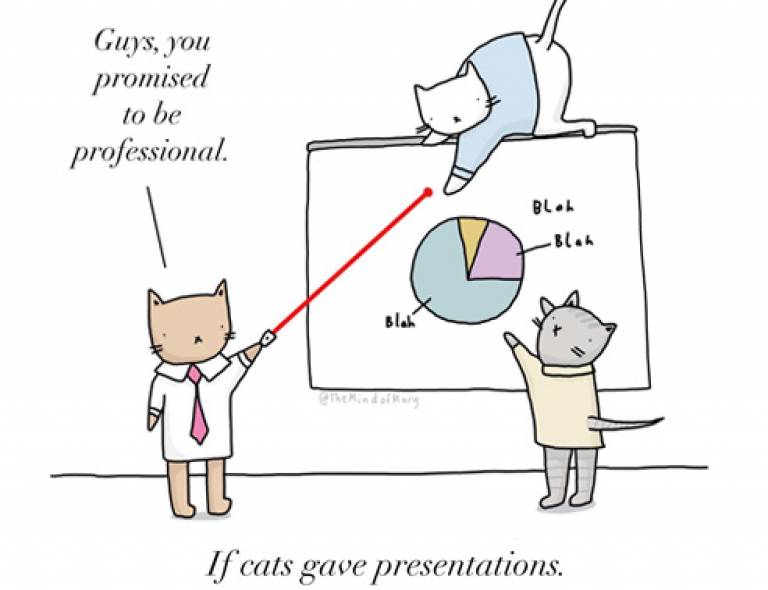How to give a (good enough) presentation
6 June 2018
Whether or not you're willing to admit it, we all have that secret, deeply psychologically suppressed dream of giving a TED talk that leaves audiences speechless.
 However, when it comes to giving an end-of-year presentation on a project that barely went well (to say the least), or if you're generally more of a stage-shy person, giving that all-inspiring talk can seem pretty much impossible.
However, when it comes to giving an end-of-year presentation on a project that barely went well (to say the least), or if you're generally more of a stage-shy person, giving that all-inspiring talk can seem pretty much impossible.
However, never fear! Here are four ways to turn any idea into decent talk that (most) academics will appreciate.
1. Know who your audience is
Knowing whether your audience is made up of professionals in your field or of laymen who are interested and want to learn more is key to knowing how to make your talk relatable. If you're going to introduce complex subjects, make sure you build these up gradually by using language that is familiar to them. Use metaphors (though not too many as that can be confusing within itself) and explain any complex terminology that you use, if needed.
2. Stick to one major idea
In his own TED talk 'TED's secret to great public speaking', Chris Anderson, Curator of TED, stresses that presenting just one major idea is key to giving a great talk. Ideas are complex things that need to be explained properly, especially if it's something your audience isn't too familiar with. Provide examples of your idea and make it the run-along theme of your entire talk - the one thing you keep coming back to. This provides clarity for your audience, helping them to fully engage, fill any gaps in their understanding and develop perspectives as closely to yours as possible. A complete story, well told.
3. Spare the PowerPoint slides
Unless absolutely necessary (e.g. when presenting data), try to keep the number of slides to a minimum, if you use them at all. As I learnt when presenting my Master's thesis, there is such a thing as too much information. Jam-packed slides that seem to go on forever distract the audience from what you're actually saying. And, unless - plot twist - that's actually your goal, you may want to stick to just one or two images per slide that simply represent your ideas. As a rule of thumb, think of slides as a way to further emphasise what you say, and not the other way around.
4. Practise makes good enough
The truth is, no talk is ever going to go exactly the way you planned; I've sat through many presentations where technology, awkward interruptions, fire drills, and confused pigeons flying into windows have made life hard for the speakers. However, one way to prepare for these somewhat uncommon circumstances is by practising your talk with others (e.g. a supervisor, lab mates, colleagues, your cat, or even a video camera). Practising allows you to verbally organise your thoughts and see whether you're actually getting your message across, speaking loud enough, and/or taking enough time with your words. However, the most important thing to remember when presenting is to believe in yourself and your idea; passion shines through the most in any presentation and your audience will appreciate and, hopefully, remember that the most… and not the pigeon.
By myUCL Student Journalist Maryam Clark. Read more from Maryam with the Introvert's Survival Guide to University.
 Close
Close

